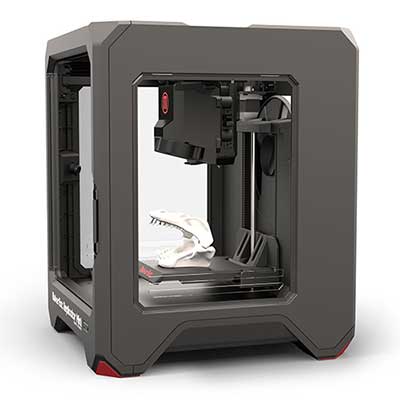
As a new year begins to unfurl before us, and we consider trends that may become popular and successful, one technology that is poised to have a significant impact on how goods are manufactured is 3D printing. This breakthrough method, which relies on building plastic, ceramic or metal components by fusing together droplets of liquefied feedstock or particles of finely ground powder, offers several thought provoking advantages. So, let’s talk about 3D printing…
First, let’s consider what is putting 3D printing at the forefront of people’s thinking. For the casual user, the thought that you can produce three-dimensional solid shapes without having to have your own fabrication shop, or having to wait for tooling to be built is quite attractive. Hobbyists and small business folks who may only want or need a couple of their pieces built at a time are finding that utilizing 3D printing is a major benefit. It’s quick, has relatively low startup costs, it is under their direct control, it requires little infrastructure … very user friendly. For the more serious industrial company, these same arguments probably hold true for their ability to prototype new parts. However, when thinking about mass production, as volumes increase, the benefits of 3D printed parts over parts fabricated using more traditional benefits start to shrink. Once the time and capital investment is made for the tooling to produce parts in volume, the production cycle time and Unit Manufacturing Costs still favors our existing methods.
{{cta(‘fd027f62-d24b-4bb1-9e96-eb98ea9c0890’)}}
Here is another cool feature of 3D printing: the ability to build the part bit by bit results in the opportunity to design in more sophisticated internal structures, allowing the final piece to have a higher strength to weight ratio than a comparable part manufactured with more traditional methods (like molding, casting, forging, or machining). So, where a part made from a homogeneous metal or plastic might be too heavy (as in an aerospace application), a 3D printed part with an internal matrix designed to effectively carry the load (and with air pockets or exclusions to reduce weight) is going to help an airframe to be lighter, and thus carry more payload. This ability to leave out unnecessary material will also be advantageous when parts need to be built out of expensive materials (like high grade stainless steel, or titanium). By printing the part, the reduction in the cost of raw materials is directly related to the ability to print the load carrying geometry and thereby leave out unneeded metal.
For those of us who are concerned about how we use our resources and want to conserve energy, as well as materials, 3D printing is right in our sweet spot. It is an additive approach to making solid objects, and only uses the amount of raw materials required to make the needed part. Nothing extra is machined off or trimmed and thrown away. It is very effective in this regard.
So, if 3D printing is this good, what is holding it back from more global adoption? Well, as an emerging technology, people who have been working on 3D printing systems and materials still have some major challenges to overcome. There is a fundamental problem with how the part structure is built up by fusing tiny particles. The resulting solid mass of fused particles is not as strong as its comparable molded or forged (homogeneous) counterpart. Under load, the printed part will fail sooner by fracturing through the fused joints. This handicap in terms of strength due to how the part is built will need to be overcome. A second major issue is cycle time. While the time to start manufacturing the part is almost non-existent (if you have a printer and you have the design for your part, you can press the button and production starts), the cycle time to build the part is still quite high. For example, a plastic part that is injection molded might have a cycle time of just seconds, that same part made in a 3D printer might take 30 minutes to produce. That’s because each droplet of printed plastic is placed one at a time, as the machine has to reposition its printing stylus and weld droplets thousands of times to build up the complete part.
It is fair to say that 3D printing will continue to make the production of solid parts more flexible, and allow other innovations. But, let’s not write off our traditional methods just yet … we have a way to go before we will be able to print parts with the same structural integrity and high volume production speeds and costs.
